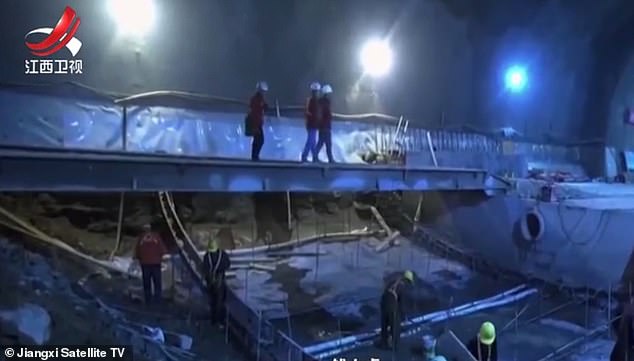“Underground Great Steel Wall of China” could guarantee the security of the country’s strategic arsenal, against potential attacks, including those from future hypersonic weapons. According to Qian Qihu, A Chinese scientist and the recipient of China’s highest science and technology award in 2018, told the Global Times.
What is China’s Great Steel Wall?
China’s underground great steel wall is the vast network of underground tunnels that spread throughout the country to store, transport, and launch nuclear weapons through Inter Continental Ballistic Missiles (ICBMs). The basic aim of the underground tunnel system is to gain a secure 2nd strike capability.
Hackers may have hacked core US secrets in a months-long cyber attack
What experts say about ‘The China’s Great Wall’:
Dr. Phillip Karber, A Ukrainian American Veteran and an assistant professor at Georgetown University, also wrote about the ‘Underground Great Wall of China’ in a report published in September 2011.
According to Dr. Phillip Karber, there are at least 5000 km (3000 miles) of complicated tunnels that could hold 3000 nuclear weapons.
The tunnel system located deep under mountains and the mountains rock is thick enough to resist the potential enemy attack. The entrance and exit of these tunnels may be vulnerable to attacks but Qian’s work is to provide extra protection that could withstand any kind of potential attack.
Material used in the development of the underground great wall:
Mostly these underground facilities are built with reinforced concrete that could bear the conventional attack from enemies.
In 2002, the Chinese military formed a team of scientists to create a new type of building material that could withstand the strikes from some of the most deadly weapons on earth. After nearly 15 years of research by the team, they came across a perfect formula for the material by adjusting the proportion of steel fiber and reactive power, marking a breakthrough for the project.
The experimental test on the new material was carried out in 2017. A small piece of the material about 80 centimeters in length, width, and height was hit by a 57mm cannonball at the speed of 493 to 526 km/hr. The impact has blown the conventional material into pieces but the new material expanded a little and stayed intact in general.
China strictly follows the ‘No First Use’ principle regarding the use of its nuclear weapons. This strategy requires the country to withstand a nuclear attack before it responds with its strategic weapons.
F-22 Raptor, The most advanced 5th-Generation fighter jet in the world
Qian’s work guaranteed the safety of the country’s strategic weapons, launch and storage facilities as well as commander’s safety during extreme times, said Song Zhongping, a military expert.
Qian describes his work as the “country’s last national defense line”. He told in an interview with Global Times. If other defense systems including anti-missile systems, strategic missile interception systems, and air defense systems fail to function against the new hypersonic missiles and recently developed bunker busters, Qian’s work still thwart such attacks.
Russia and the USA:
In recent times, Russian President Vladimir debuted new nuclear and hypersonic weapons which according to him are ‘invincible’. On the other hand, the US is also developing hypersonic weapons, which pose a serious threat to the air defense systems of its adversaries.
Due to the advancement in missile technology, every major power also focusing to develop new air defense systems and new defensive strategies to secure their nuclear arsenal. That will help them to use their strategic weapons after absorbing the first nuclear strike from its adversaries.
Analysis:
After analyzing the reports and expert opinions, we can say that building the ‘Underground great wall’ would greatly enhance China’s second-strike capability and ensure the safety of its nuclear weapons. This will also minimize the threat of first use of nuclear weapons from its enemies.


